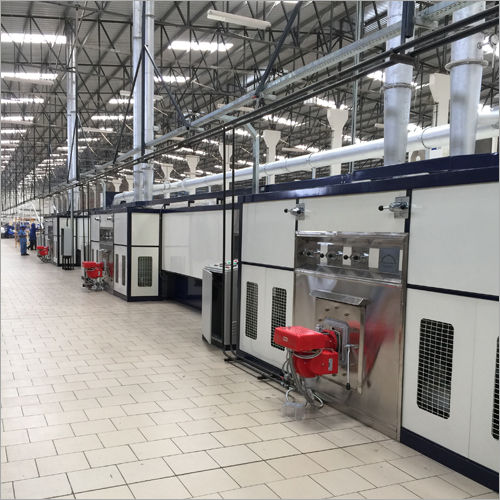
Mechanical Impellers
4000000 INR/Piece
Product Details:
- Material Stainless Steel
- Power Source Electric
- Automatic Grade Fully Automatic
- Color Sliver
- Warranty 1 Year
- Click to view more
X
Mechanical Impellers Price And Quantity
- 1 Piece
- 4000000 INR/Piece
Mechanical Impellers Product Specifications
- Electric
- Stainless Steel
- 1 Year
- Fully Automatic
- Sliver
Mechanical Impellers Trade Information
- 2 -3 Piece Per Month
- 2 Months
Product Description
Mechanical Impellers provided by us, are a revolving component having which is turned into pump power output by flow deflection at the impeller vanes. The impellers of centrifugal pumps can be redesigned or modified to increase pump performance. They are very easy to install as well as simple to use. The goal of Mechanical Impellers modification is to increase pump efficiency while reducing cross flow, secondary incidence flows, and backflow regions at impeller outputs. They are very effective and economical and safe to use.
The following are a couple of utilizations where mechanical impellers are regularly utilized:
1. Radiating Siphons: In diffusive siphons, the impeller speeds up the liquid radially outward from the focal point of turn. This speed increase makes a tension slope that impels the liquid through the siphon and into a release pipe.
2. Fans and Blowers: Impellers are utilized in fans and blowers to move air or gases. They make wind stream by producing a tension distinction between the gulf and outlet of the gadget.
3. Blowers: Impellers in blowers are utilized to raise the tension of gases. As the impeller turns, it speeds up the gas, and the subsequent expansion in motor energy is changed over into pressure energy.
4. Turbines: now and again, impellers can be utilized backward as turbines. In this unique circumstance, they separate energy from a moving liquid, changing over it into rotational movement. Steam turbines, wind turbines, and hydroelectric turbines are instances of this.
5. Blenders and Fomenters: Impellers can likewise be tracked down in modern blending and fomentation applications, where they help mix and blend various parts inside a liquid.
FAQ:
1. What is a mechanical impeller?
Ans: A mechanical impeller is a pivoting part with cutting edges or vanes that is utilized to move liquids (fluids or gases) or give dynamic energy to liquid streams in different machines like siphons, fans, blowers, and turbines.
2. How does an impeller function?
Ans: When the impeller turns, its sharp edges cooperate with the liquid, making the liquid move or gain energy. This development can be utilized to make pressure contrasts, produce wind stream, or concentrate energy from the liquid.
3. What are the sorts of impellers?
Ans: There are different sorts of impellers, including:
a. Open Impeller: Sharp edges are connected to the center point without a cover, permitting solids to go through.
b. Semi-Open Impeller: Like open impellers yet with a fractional cover to further develop effectiveness.
c. Shut Impeller: Sharp edges are completely covered, making it more productive for liquids with solids or grating particles.
d. In reverse Bended Impeller: Sharp edges bend away from the bearing of pivot, appropriate for high-pressure applications.
e. Forward-Bended Impeller: Cutting edges bend towards the bearing of revolution, reasonable for low-pressure, high-stream applications.
f. Outspread Impeller: Edges expand radially from the middle, offering a harmony among tension and stream.
4. What are a few normal uses of impellers?
Ans: Impellers are utilized in:
a. Radial siphons for liquid transportation.
b. Fans and blowers for making wind current.
c. Blowers for raising gas pressure.
d. Turbines for separating energy from liquid streams.
e. Blenders and fomenters for mixing substances in liquids.
5. How would you choose the right impeller for an application?
Ans: Impeller choice relies upon elements, for example, liquid properties, stream rate, pressure necessities, temperature, and the expected reason for the machine. The sort, size, and material of the impeller are customized to meet the particular necessities of the application.
6. What is the job of impeller proficiency?
Ans: Impeller productivity shows how successfully the impeller changes over mechanical energy into liquid energy. A more effective impeller configuration brings about less energy wastage and better by and large execution of the gadget.
7. How is impeller upkeep done?
Ans: Standard support includes cleaning, assessing for wear or harm, and guaranteeing appropriate arrangement. Contingent upon the application, support could likewise include supplanting broken down impellers to keep up with ideal execution.
8. Could impellers at any point be modified for explicit applications?
Ans: Indeed, impellers can be altered to suit explicit necessities. Architects can plan impellers with shifting cutting edge shapes, points, and materials to advance execution for various liquids, tensions, and stream rates.
9. What difficulties can emerge with impeller activity?
Ans: Difficulties incorporate cavitation (development of fume rises in fluids), wear because of grating liquids, irregularity prompting vibration, and proficiency misfortune because of erroneous impeller determination or wear.
10. How does impeller innovation keep on advancing?
Ans: Progressions in materials, computational liquid elements (CFD) reenactments, and assembling methods add to more productive and strong impeller plans. Also, research centers around limiting energy utilization and further developing impeller execution across different ventures.
Tell us about your requirement

Price:
Quantity
Select Unit
- 50
- 100
- 200
- 250
- 500
- 1000+
Additional detail
Mobile number
Email
Other Products in 'Biscuit Making Machine' category
 |
ESSPEE ENGINEERS
All Rights Reserved.(Terms of Use) Developed and Managed by Infocom Network Private Limited. |












